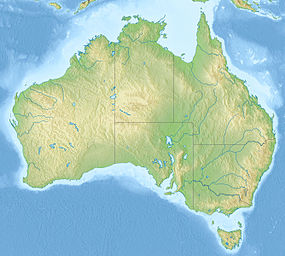Uluru National Park
| Uluru (Uluṟu) | |
| Ayers Rock | |
|
Aerial view of Uluru
|
|
| Country | Australia |
|---|---|
| State | Northern Territory |
| Elevation | 863 m (2,831 ft) |
| Prominence | 348 m (1,142 ft) |
| Coordinates | 25°20′42″S 131°02′10″E / 25.34500°S 131.03611°ECoordinates: 25°20′42″S 131°02′10″E / 25.34500°S 131.03611°E |
| Geology | arkose |
| Orogeny | Petermann |
| UNESCO World Heritage Site | |
| Name | Uluṟu–Kata Tjuṯa National Park |
| Year | 1987 (#11) |
| Number | 447 |
| Criteria | v,vi,vii,ix |
| Website: www.environment.gov.au/ | |
Uluru /ˌuːləˈruː/ (Pitjantjatjara: Uluṟu), also known as Ayers Rock /ˌɛərz ˈrɒk/ and officially gazetted as "Uluru / Ayers Rock", is a large sandstone rock formation in the southern part of the Northern Territory in central Australia. It lies 335 km (208 mi) south west of the nearest large town, Alice Springs, 450 km (280 mi) by road.
Uluru is sacred to the Pitjantjatjara Anangu, the Aboriginal people of the area. The area around the formation is home to an abundance of springs, waterholes, rock caves and ancient paintings. Uluru is listed as a UNESCO World Heritage Site. Uluru and Kata Tjuta, also known as the Olgas, are the two major features of the Uluṟu-Kata Tjuṯa National Park.
The local Anangu, the Pitjantjatjara people, call the landmark Uluṟu (Pitjantjatjara [uluɻu]). This word is a proper noun, with no further particular meaning in the Pitjantjatjara dialect, although it is used as a local family name by the senior Traditional Owners of Uluru.
...
Wikipedia


